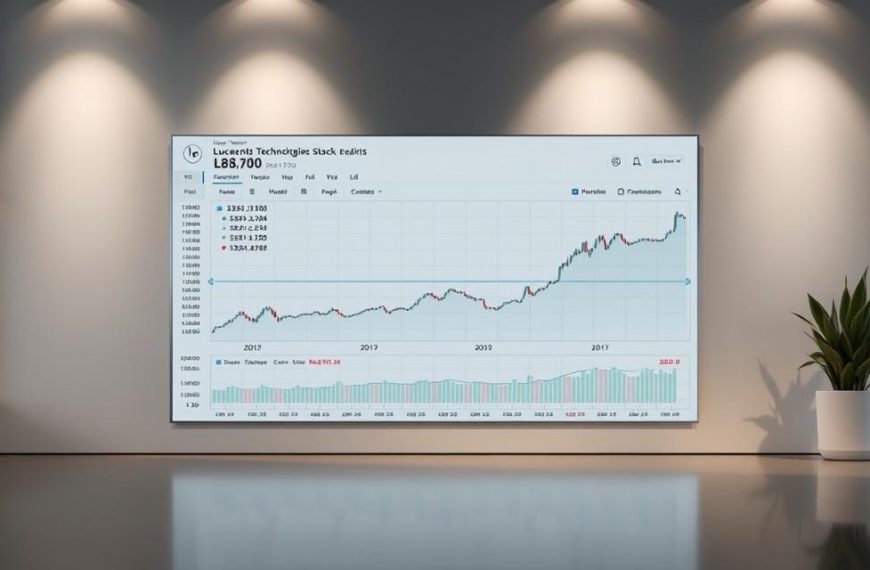Technology has revolutionised solar research, expanding our understanding of solar power. Modern innovations have transformed scientists’ approach to renewable energy solutions1. Today’s solar panels achieve efficiency levels of 15% to 23%, far surpassing the 6% efficiency of the first solar cell in 19541.
Solar technology has evolved remarkably since its inception. Researchers have consistently improved solar energy potential through sophisticated designs. In 2023, teams created perovskite-silicon solar cells exceeding 30% efficiency1.
Space exploration has driven significant advancements in solar research. NASA’s Parker Solar Probe and advanced solar arrays showcase the importance of robust solar technologies. These developments enhance our understanding of solar power and expand renewable energy applications1.
Solar cell technology continues to improve, highlighting sustainable energy potential. Experimental solar cells are now approaching 50% efficiency, promising a bright future. These innovations are rapidly changing our approach to solar power generation1.
The Current State of Solar Technology in the UK
The UK’s solar technology scene is evolving rapidly. Significant advancements in installation capacity and market potential are driving this change. Solar power has become crucial to the nation’s renewable energy strategy2.
Installation Capacity and Growth Trajectory
The UK solar sector shows impressive growth. Solar power generation hit a record 10.971GW, powering over 4,000 homes for a year2. The nation is committed to expanding solar technology.
Last year saw over 183,000 solar photovoltaic installations completed2. Solar farms occupy less than 0.1% of UK land2. By 2050, the UK aims for 75-90 gigawatts of solar power2.
- Over 183,000 solar photovoltaic installations completed last year2
- Solar farms occupying less than 0.1% of UK land2
- Projected solar power requirement of 75-90 gigawatts by 20502
Cost Reduction Trends
Solar technology costs have dropped dramatically. Since 2010, UK solar panel installation costs have fallen by 60%2. This trend mirrors global patterns of photovoltaic production growth3.
| Year | Cost per Watt | Production Increase |
|---|---|---|
| 1970 | $100 | Baseline |
| 2016 | $0.50 | 100x increase |
Market Growth Projections
The UK’s solar market is set for major growth. Government support and tech advances are driving this expansion. Solar power will help achieve net-zero emissions by 20502.
Solar panels now have a carbon payback period of 1-4 years2. Up to 99% of solar panel materials can be recycled2. The future of UK solar technology looks promising.
How Has Technology Changed What We Know About the Sun
Scientific exploration has transformed our grasp of solar energy and its potential. Tech advancements have boosted solar panel efficiency and measurement techniques. This progress has opened new paths in renewable energy4.
Breakthroughs in Panel Efficiency
Solar panel efficiency has made impressive strides. Top-tier panels now achieve over 21% efficiency. Cutting-edge tech is pushing this boundary towards 28%5.
Innovative approaches like perovskite crystal layers are transforming solar energy conversion. These advancements are setting new standards in the industry.
- Top panels reaching over 21% efficiency
- Perovskite technologies expanding performance limits
- Potential for future efficiency improvements
Advanced Measurement Techniques
New measurement techniques offer deep insights into solar phenomena. The Genesis project has gathered crucial solar wind samples. This data helps us understand the sun’s complex makeup4.
New Materials Discovery
Research into new solar materials is pushing tech limits. Emerging materials like thin-film tech create more efficient solar solutions. Advanced crystalline structures also offer adaptable options.
The future of solar technology lies in continuous innovation and material research.
Scientists are exploring ways to boost solar panel efficiency. They’re developing advanced measurement techniques. New materials could revolutionise renewable energy generation5.
Revolutionary Advancements in Solar Panel Design
Solar panel design is evolving rapidly, pushing the limits of innovative technology. Recent breakthroughs have greatly improved panel efficiency, setting new standards for renewable energy generation6. Solar power cells now surpass 30% energy efficiency, marking a significant leap forward6.
Key developments in solar panel design now focus on several critical areas:
- Highly pure N-type solar cells with exceptional longevity
- Advanced materials improving overall panel performance
- Reduced degradation rates for extended solar panel life
Next-generation panels show remarkable capabilities. These cutting-edge designs maintain over 90% efficiency after 25 years of use6. The practical efficiency limit is thought to extend beyond 35%, opening new possibilities for solar energy6.
Tandem cell development is particularly exciting. Researchers have achieved efficiency rates of up to 33.7% with some models6. This is a major improvement over traditional silicon-based panels, which max out at 29% conversion efficiency6.
The future of solar panel design lies in pushing technological boundaries and maximising energy capture.
For the UK market, these advancements signal a promising future in renewable energy. We can expect more efficient, durable, and cost-effective solar solutions in the coming years7.
Next-Generation Thin-Film Technology and Applications
Thin-film solar technology is revolutionising energy generation. These innovative solutions are changing how we capture and use solar energy. They’re pushing the boundaries of traditional methods across various applications8.
Flexible Solar Fabrics: A Breakthrough in Design
Flexible solar fabrics are a cutting-edge development in renewable energy. These materials can be integrated into many surfaces, offering unmatched versatility.
Power Roll’s approach shows great potential with their thin-film solar cells. Their cells are approximately one micrometre wide – about one-fiftieth the width of a human hair9.
- Incredible miniaturisation of solar technology
- Potential for widespread integration
- Lightweight and adaptable design
Building Integration Solutions
One in three buildings in the UK can’t support traditional solar panel weight. Thin-film solar technologies offer an elegant solution to this problem.
These technologies enable seamless energy generation without compromising building structures. They’re transforming architectural possibilities in exciting ways9.
Performance in Low-Light Conditions
Advanced thin-film technologies work well in challenging environments. Amorphous silicon absorbs solar radiation 40 times more efficiently than single-crystal silicon.
A thin film about 1 micrometer thick can capture 90 percent of usable light energy. This makes it highly effective even in low-light conditions10.
| Technology | Efficiency Range | Key Characteristics |
|---|---|---|
| Cadmium Telluride | 19-22.1% | Lowest carbon footprint |
| Copper Indium Selenide | 22.3% | High conversion efficiency |
| Perovskite | 20-27% | Promising future potential |
Research in thin-film solar technology continues to advance. These developments are making solar power more accessible and adaptable.
The future of renewable energy generation looks bright with these exciting advancements8.
Innovative Solar Architecture and Building Integration
Building-integrated photovoltaics (BIPV) are revolutionising sustainable design in modern architecture. Solar technology is now seamlessly incorporated into building materials. This creates structures that generate clean energy whilst maintaining aesthetic appeal.
Solar glass and integrated solar technologies are driving significant changes in construction practices. The construction sector accounts for nearly 30% of global energy consumption. Companies are developing cutting-edge solar integration technologies that serve multiple purposes beyond electricity generation.
- Solar metal roofs combining durability with energy production11
- Energy-efficient solar shingles for residential applications11
- Integrated solar materials providing insulation and weather protection11
The market potential for building-integrated photovoltaics is remarkable. Advanced solar glass technologies are expanding energy generation possibilities. Some innovative solutions can operate efficiently even in low-light conditions.
| BIPV Technology Benefits | Impact |
|---|---|
| Energy Generation | Direct electricity production |
| Building Functionality | Enhanced structural performance |
| Urban Landscape Transformation | Sustainable architectural design |
Solar architecture is paving the way for more sustainable and energy-efficient built environments. The integration of photovoltaic technologies into building design is reshaping urban landscapes. It’s a fundamental reimagining of how structures interact with energy production.
Night-time Solar Generation: Breaking Traditional Boundaries
Solar energy’s daylight limitations are being challenged. New night-time solar technologies are revolutionising renewable energy capabilities12. Scientists are creating innovative ways to harness power in darkness.
Anti-Solar Panel Innovation
Anti-solar panels are transforming energy capture using infrared radiation techniques. These advanced technologies generate power differently from traditional solar panels13.
The technology uses the temperature difference between Earth’s surface and the atmosphere. It captures heat radiated from the ground to produce electricity.
- Captures heat radiated from the ground
- Generates power during nighttime hours
- Operates using thermoelectric generators
Power Generation Capabilities
Night-time solar generation currently produces less power than daytime systems. However, researchers predict significant potential for this technology14.
Even a 25% capacity could greatly increase overall renewable energy output. This technology is crucial for continuous, round-the-clock sustainable energy production.
| Technology | Night-time Power Generation | Potential Impact |
|---|---|---|
| Traditional Solar Panels | 0% | Limited |
| Anti-Solar Panels | 25% | Transformative |
Future Prospects
Night-time solar generation shows remarkable innovation in renewable energy. Infrared radiation capture could bridge the energy gap during non-sunlight hours. This offers a promising solution for consistent power generation.
Emerging Applications in Agriculture and Infrastructure
Solar infrastructure is revolutionising sustainable farming through agrivoltaics. This innovative practice allows solar panels to work alongside agricultural landscapes. It creates dual-purpose land use strategies for energy and crop production15.
Agrivoltaics uses narrow solar panels on high frames with wide spacing. This setup enables shared land use for both energy generation and farming15.
Solar technology’s potential for sustainable farming is impressive. Developing countries have increased their global agricultural output share from 44% to 73%. They’ve achieved this while using minimal extra land16.
Solar microgeneration for farming has become more common and affordable. It’s used for irrigation pumping and electric fencing15.
Innovative projects worldwide showcase the union of renewable energy and agriculture. South Australia completed a 1.5 megawatt concentrated solar plant. It cools greenhouses and supports seawater desalination for irrigation15.
Morocco has revealed ambitious plans to boost renewable energy generation. They’re focusing on subsidised solar power for irrigation pumping to develop new farmland15.
FAQ
How efficient are modern solar panels?
What are Building Integrated Photovoltaics (BIPV)?
Can solar panels generate electricity at night?
What is agrivoltaics?
How is the UK solar market developing?
What are thin-film solar technologies?
Are solar panels becoming more environmentally friendly?
How do advanced measurement techniques improve solar research?
Source Links
- https://science.nasa.gov/sun/how-nasa-uses-and-improves-solar-power/
- https://www.nationalgrid.com/stories/energy-explained/solar-power-questions-answered
- https://www.bbc.co.uk/news/business-49344595
- https://solarsystem.nasa.gov/genesismission/science/mod3_SunlightSolarHeat/UnderstandingOfSun/index.html
- https://www.bbc.co.uk/newsround/articles/cxeeyr95n3xo
- https://www.theguardian.com/environment/2023/jul/06/revolutionary-solar-power-cell-innovations-break-key-energy-threshold
- https://www.renewableenergyinstaller.co.uk/2023/10/latest-developments-in-solar-pv-which-are-the-game-changers/
- https://www.azom.com/article.aspx?ArticleID=21669
- https://www.solarpowerportal.co.uk/revolutionising-solar-flexible-thin-film-flexible-cells-will-put-solar-pv-everywhere/
- https://www.techbriefs.com/component/content/article/1296-paper-thin-plastic-film-soaks-up-sun-to-create-solar-energy
- https://neweraenergy.co.uk/blog/solar-panel-integration-in-building-design/
- https://www.bluettipower.ca/blogs/solar-power/do-solar-panels-work-at-night?srsltid=AfmBOoqJ4aJvq3fvrkITPI-76RSbVooFwt6swbg_Wqyc526sTSLRYWii
- https://informedinfrastructure.com/96398/how-technology-is-reshaping-solar-panel-infrastructure/
- https://www.fmb.org.uk/homepicks/solar-panels/how-much-electricity-will-solar-panels-generate/
- https://www.nortonrosefulbright.com/en-us/knowledge/publications/b54c815d/agrivoltaic—solar-powering-the-future-of-agriculture
- https://www.mdpi.com/2071-1050/16/19/8480
















